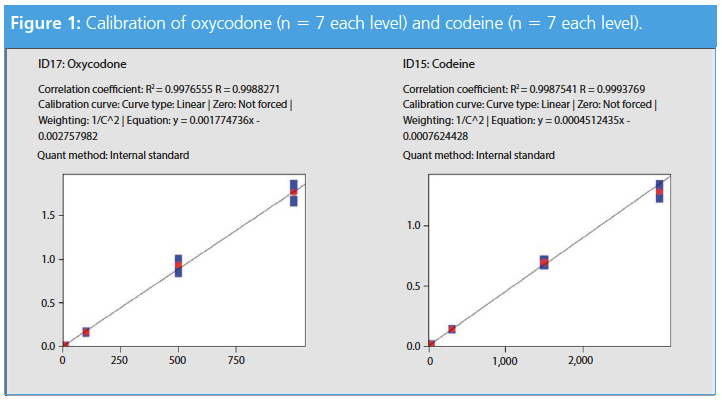The Rise of the Robots
Evolve or die!
besjunior/stock.adobe.com

Evolve or die!
I recently read a nice article from The Robot Report (1), which contrasted the performance of robots in industry against those of humans. The takeaways from the report are as follows.
The article highlighted five areas where robots perform better than humans: a) handling tedium, b) extreme sensing, c) strength and speed, d) unwavering focus, and e) perfect, objective recall.
The article also highlighted three areas where humans still outperform robots: a) empathy, b) flexibility, and c) acceptability and trust.
It strikes me that considering these points within the laboratory context, we may not be taking full advantage of the positive aspects of robotics, or indeed working to address the negative aspects. This is especially true when considering sample preparation and sample manipulation.
I can think of several situations where sample handling robotics are used to “handle tedium” and perhaps the foremost of these is in the area of bioanalysis, which has traditionally meant the analysis of small molecule therapeutics in physiological samples used extensively in the area of clinical trials. There are typically hundreds or perhaps even thousands of samples, all of which need to be prepared or extracted to the same protocol. The ideal application! I know of several manufacturers producing robotic solutions that can automate operations, such as diluteâandâshoot, or more complex operations, such as solid-phase extraction (SPE). Whilst these solutions are very elegant, I don’t know many of these that interface directly with the high performance liquid chromatography (HPLC) system, perhaps losing some of the “fully automated” benefits. Further, these systems tend to be expensive, and so the return on investment case will rely heavily on having thousands of samples to process-and not every laboratory is in this category. What of the laboratories that only deal with tens or hundreds of samples per “campaign”? Should they disregard the benefits of automation?
I believe not, especially when one considers some of the other benefits of automation.
Most laboratory workers with more than just a few samples to process will be familiar with the daily routine of preparing samples, setting up equipment, running a system suitability, checking fitness for purpose, and then starting the “batch” of samples just before leaving work for the evening. Modern instruments have very much reduced the amount of finger crossing required on the journey home and that sense of anticipation as one enters the laboratory the next morning to see if the “run has worked” or not, but those feelings of anxiety have not been completely eliminated. Automated robotics have the power to change this paradigm, with samples being prepared in a “justâinâtime” fashion so that the analysis can begin at the start of the day and much of it will be done as we leave work-preparation and analysis times permitting. We could then even rack up enough samples to do the same thing overnight-hence improving our throughput if required.
Of course, we need the automated solutions to be very robust and reliable, and this is perhaps where the industry needs to evolve, to ensure that our engineering is optimized to the point at which fallibility is not a consideration. Again, most of us are familiar with situations where campaigns have been halted overnight due to a vial not being gripped or picked up properly, or a vial tolerance that has caused the autosampler to reject a particular sample, or even simply to drop the vial. Here evolution in the flexibility and “learning” of the instruments could be improved. Provided that the rejected vial does not lie in a dangerous or obstructive position, the robot should be able to move to the next operation and simply flag the failure in the batch report.
There is a myriad of situations in which robotics can be used for sample preparation in HPLC and will produce a better result than the human laboratory worker might otherwise manage. Operations such as sample dilution (including serial dilution), filtration, and derivatization are all possible. There are sample robotics that can handle weighing, mixing, and even centrifugation, yet I don’t see these solutions being employed in many HPLC laboratories-I wonder why? I can state with certainty that the robot will follow a sample preparation or extraction protocol with much greater precision than a human, provided that it has been properly “trained”. It will also follow the standard operating procedure (SOP) every time. Can we honestly say that we follow the SOP for every sample preparation that we undertake? Robots are infallible in terms of recall, we are not.
Whilst many sample preparation or extraction protocols in HPLC are relatively straightforward, there are those which are not so simple, such as SPE or more complex liquid–liquid extraction (LLE) protocols. Even more complex operations, such as method development and optimization using design of experiments (DoE) approaches, often require a variety of subtly different sample preparation methods to optimize and investigate the robustness of a procedure, and in this context, I would argue that robotics is very much a solution just waiting to be adopted. But again, I don’t see widespread implementation and it really puzzles me as to why not. Could it be that we consider sample preparation for HPLC too simple? Not worthy of automation because it can be quickly and easily achieved within the sample preparation laboratory? Ask yourself how many batch failures or laboratory investigations have been related to issues with sample preparation?
You will note that up to this point I have concentrated on liquid chromatography for this discussion. I think the gas chromatography (GC) marketplace may be slightly different, more evolved even. There are several manufacturers producing advanced robotics systems for the preparation and manipulation of samples prior to GC analysis and the complexity of the systems is much more advanced than I typically see allied to HPLC instruments. Furthermore, the systems are fully integrated and can inject the sample into the GC system, with just-inâtime sample preparation capabilities. These systems are equipped with many tools that enable weighing, mixing, shaking, heating, centrifugation, solvent evaporation, and a host of other options. This enables operations such as sample dilution, addition of internal standards, derivatization, LLE, solid-phase microextraction (SPME), SPE, and other microâextraction techniques to be automated.
Even in situations where large sample volumes were traditionally used, such as environmental analysis, automation has been made possible because of advances in mass spectrometric (MS) detection technology and sensitivity, which can be achieved using detectors such as triple quadrupole (QQQ) and quadrupole timeâofâflight (QTOF) instruments. Essentially the increase in detector sensitivity enables much smaller volumes of samples to be processed without compromising limits of detection or quantitation. Of course, this reduction in sample volume also means that the automated version of these techniques is not only greener (lower volumes of organic extraction solvents), but is achieved within the chromatographic run time, enabling “just-inâtime” sample processing for all but the most complex preparation or extraction protocols.
Perhaps this latter point highlights a potential issue with the interfacing of HPLC to robotic autosampling procedures. With the advent of ultrahigh-pressure liquid chromatography (UHPLC), chromatographic run times are typically very short and lengthy sample preparation protocols would not match the time frame of the separative phase and the overall analysis time may be extended. Here the “batch preparation” robotics with multiâhead probes used in bioanalysis (mentioned earlier) may have the edge because the overall campaign time may be reduced. However, when the benefits of improved fidelity, reproducibility, and unattended operation (from fully integrated robotic solutions) are considered, even one sample at a time approaches may still be of considerable benefit in HPLC analysis.
So, what is preventing further implementation of robotic solutions in the GC laboratory? Or the adoption of robotic approaches in the HPLC laboratory? Do we lack empathy with the robotics? Do we fear them taking our jobs? Do the robotic solutions lack sufficient flexibility to achieve the large number of operations involved in some of the more complex sample manipulation protocols? Do we not know enough about these solutions to trust them? Have we “tried” robotics previously and found them to be lacking in reliability?
I think these reasons are largely prejudicial and the systems that I have encountered in recent years are capable of so much more than we might expect.
Do we then just fear the “rise of the robots”?
I encourage you to let me know your opinion, because in my view, with respect to further enhancements in analytical automation and sample preparation robotics, we either evolve or die!
Reference
- https://www.therobotreport.com/5-things-robots-better-humans/
Contact Author: Incognito
E-mail the Editor: kjones@mmhgroup.com

A Final Word from Incognito—The Past, Present, and Future of Chromatography
February 10th 2022After 14 years in print, Incognito’s last article takes a look at what has changed over a career in chromatography, but it predominantly focuses on what the future might hold in terms of theory, technology, and working practices.
Sweating the Small Stuff—Are You Sure You Are Using Your Pipette Properly?
October 7th 2021Most analytical chemists believe their pipetting technique is infallible, but few of us are actually following all of the recommendations within the relevant guidance. Incognito investigates good pipetting practice and busts some of the urban myths behind what is probably the most widely used analytical tool.










